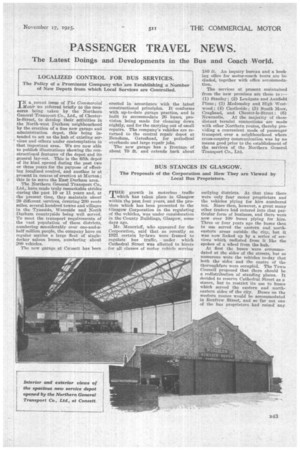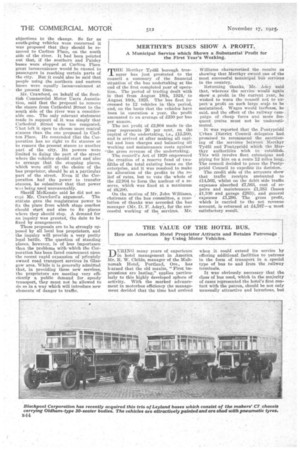BUS STANCES IN GLASGOW.
Page 27

Page 28

If you've noticed an error in this article please click here to report it so we can fix it.
The Proposals of the Corporation. and How They are Viewed by Local Bus Proprietors.
T"growth in motorbus traffic which has taken place in Glasgow within the past four years, and the problem which has been presented to the Glasgow Corporation in the regulating of the vehicles, was under consideration in the County Buildings, Glasgow, some days ago.
Mr. Moncrieff, who appeared for the Corporation, said that as recently as 1921 certain by-laws were framed to regulate bus traffic, under which Cathedral Street was allotted to hirers for all classes of motor vehicle serving outlying districts. At that time there were only four motor proprietors and the vehicles plying for hire numbered ten. Since then, however, a great many other traders had entered into that particular form of business, and there were now over 100 buses plying for hire. Three or four years ago the buses then in use served the eastern and northeastern areas outside the city, but it was now linked up by a series of services which radiated from it like the spokes of a wheel from the hub.
At first the buses were accommodated at the sides of the streets, but so numerous were the vehicles to-day that both the sides and the centre of the thoroughfare were occupted. The Town Council proposed that there should be a redistribution of standing places. It decided to reserve Cathedral Street as a stance, but to restrict its use to buses which served the eastern and northeastern sides of the city. Buses on the western routes would be accommodated in Renfrew Street, and so far not one of the bus proprietors had raised any
objections to the change. So far as south-going vehicles were concerned it was proposed that they should be removed to Carlton Place, on the south side of the river, It had been pointed out that, if the southern and Paisley buses were stopped at Carlton Place great inconvenience would be caused to passengers in reaching certain parts of the city. But it could also be said that people using the northern and eastern buses were equally inconvenienced , At the present time Mr. Crawford, on behalf of the Scottish Commercial Motor T_Jsers Association, said that the proposal to remove the stance from !Cathedral Street to the south side of the river wren considerable one. The only relevant statement made in support of. it was simply that Cathedral Street was too congested. That left it open to choose more central stances than the one proposed in Carlton Place. He contended that the Corporation has no right to fix stances or to remove the present stance to another part of the city. Its powers were limited to fixing the part of the street where the vehicles should start and also to arrange that the stopping places, which were still at the choice of the bus proprietor, should be at a particular part of the street. Even if the Corporation had the power to transfer stances, lie submitted that that power was being used unreasonably.
Sheriff McKenzie said he did not accept Mr. Crawford's argument. The statute gave the magistrates power to fix the place from which stage coaches shoold start and also to fix places where they shoUld stop. A demand for an inquiry was granted, the date to be fixed by arangemernt.
These proposals are to be strongly opposed by all local bus proprietors, and the inquiry will provide a very pretty legal battle. The question of standing places, however, is of less importance than the problems with-which the Corporation has been faced consequent upon the recent rapid expansion of privately owned road transport services in Glasgow area. While it is generally admitted that,, in providing these new services, the proprietors are meeting . very efficiently a public demand for speedy transport, they must not be allowed to do so in a way which will introduce new elements of danger to traffic.
































